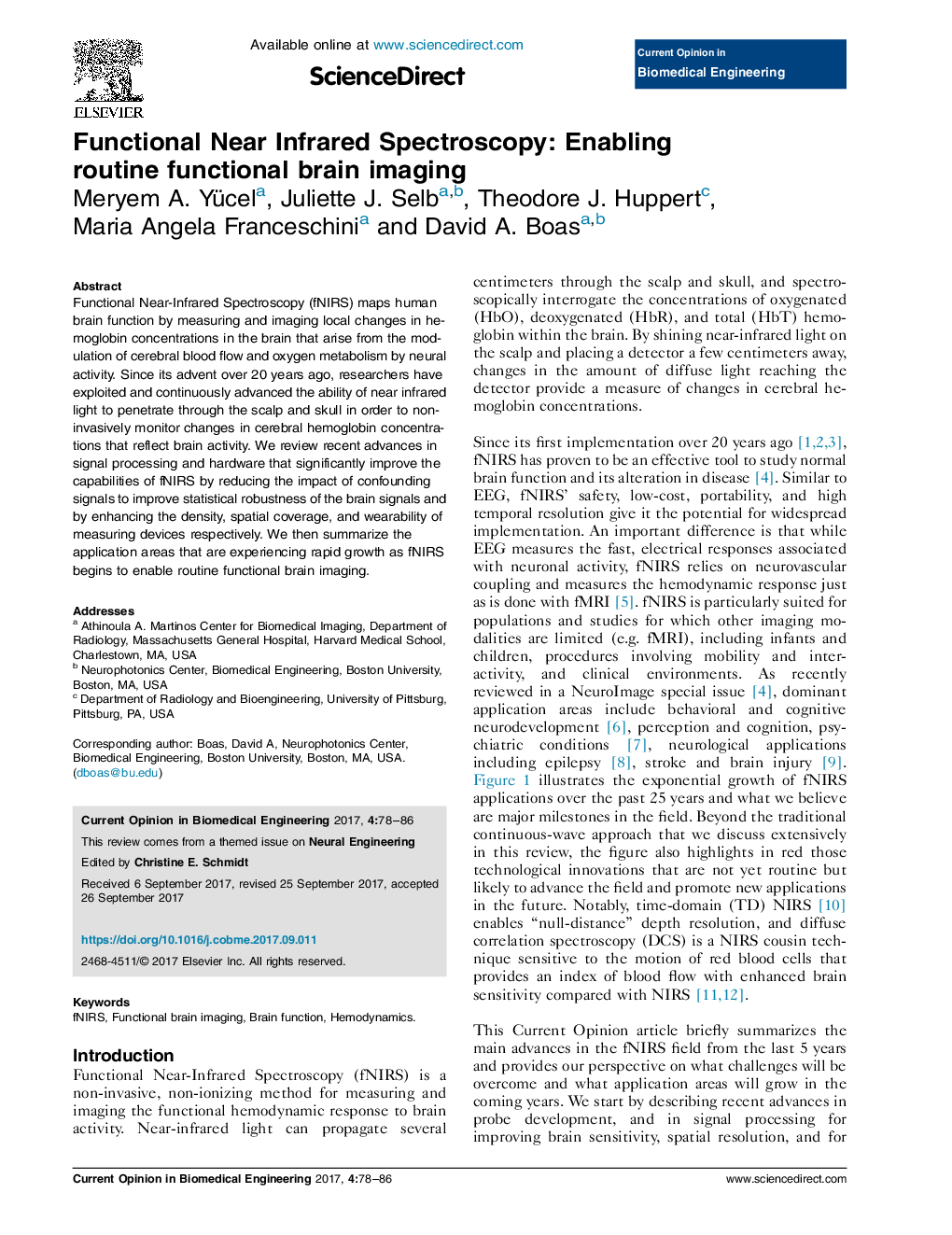| Article ID | Journal | Published Year | Pages | File Type |
|---|---|---|---|---|
| 8918991 | Current Opinion in Biomedical Engineering | 2017 | 9 Pages |
Abstract
Functional Near-Infrared Spectroscopy (fNIRS) maps human brain function by measuring and imaging local changes in hemoglobin concentrations in the brain that arise from the modulation of cerebral blood flow and oxygen metabolism by neural activity. Since its advent over 20 years ago, researchers have exploited and continuously advanced the ability of near infrared light to penetrate through the scalp and skull in order to non-invasively monitor changes in cerebral hemoglobin concentrations that reflect brain activity. We review recent advances in signal processing and hardware that significantly improve the capabilities of fNIRS by reducing the impact of confounding signals to improve statistical robustness of the brain signals and by enhancing the density, spatial coverage, and wearability of measuring devices respectively. We then summarize the application areas that are experiencing rapid growth as fNIRS begins to enable routine functional brain imaging.
Related Topics
Physical Sciences and Engineering
Engineering
Biomedical Engineering
Authors
Meryem A. Yücel, Juliette J. Selb, Theodore J. Huppert, Maria Angela Franceschini, David A. Boas,
